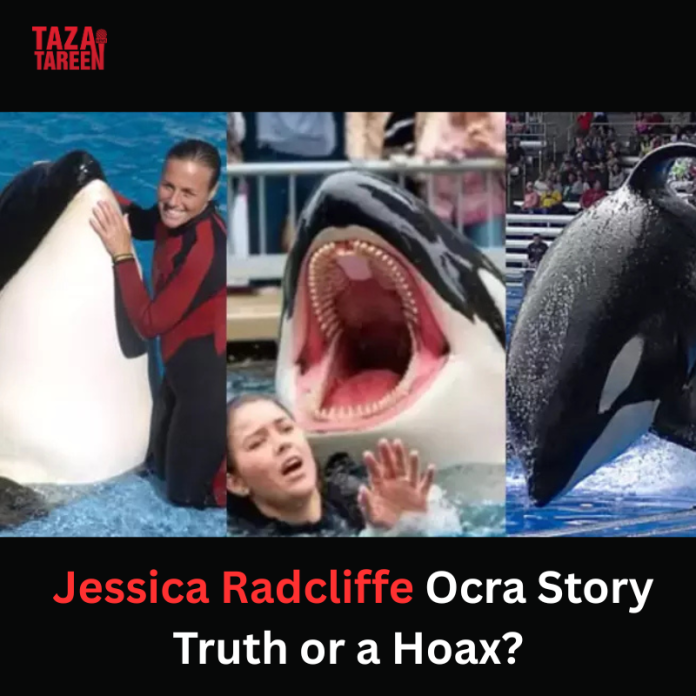Introduction
A dramatic social post claiming that a trainer named Jessica Radcliffe was killed by an orca during a live show spread rapidly online. The story looked and sounded believable video clips ominous captions and urgent shares but careful checking shows no evidence such a trainer or incident exists. This is not a case of mistaken identity, it reads like a fabricated, click driven story that borrows emotional detail from real tragedies to feel authentic.
How the hoax borrows from real tragedies
False or sensational stories often succeed because they piggyback on real events. The human mind remembers shocking, true incidents and uses them as a template for what’s possible. In this case the hoax draws on three real and tragic examples that are well documented.
Dawn Broncheau killed during an interaction with at SeaWorld in 2010. Alexis Martinez fatally injured at Loro Park in 2009. Keltie Byrne drowned in a 1991 incident at Sea land of the Pacific. Because these tragedies are part of public memory, a made up name like Jessica Radcliffe slips past scepticism more easily.
How the hoax was exposed
Fact checkers and careful journalists found no obituary, no park statement, no local or national news report, and no credible record for a trainer by that name or a matching event. The lack of verifiable sources is a red flag real incidents involving deaths at public venues almost always generate official statements, police records, and multiple independent news reports. When those are missing, the story’s credibility collapses.
Why Is the Jessica Radcliffe Orca Attack Story Going Viral Now?
1. Social Media Algorithm Boost
Platforms like Facebook, and TikTok etc. prefer emotional, shocking, and visually engaging content. Old sensational stories can suddenly get pushed into feeds if they reshared by popular pages or influencers especially with dramatic images or captions.
2. Lack of Fact Checking Among New Audiences
Many people seeing it today never saw the original hoax years ago. To them it’s “new” information so they share it without checking authenticity.
3. Memes & AI Generated Content
The rise of AI generated photos, videos makes fake stories look more convincing, even if the original didn’t have strong visuals. A realistic image of “Jessica Radcliffe” with an orca can make an old hoax feel fresh and believable.
4. Timing with Related Events
Sometimes an old hoax resurfaces when there’s fresh news about killer whales like recent wild orca or new documentaries. People link the fake Jessica Radcliffe story to real current events, giving it a new life.
Why sharing hoaxes is harmful?
Hoaxes do more than mislead. They distract attention from real victims and real policy questions about animal welfare and workplace safety. They can also spread fear, outrage, and false sympathy sometimes driving donations to bogus fundraisers. When people amplify fiction as fact, it wastes public energy that could be used for verified advocacy and reform.
How journalists and readers can do better
Journalists should continue rigorous source-checking and avoid amplifying content that lacks primary documentation. Readers and social users should prioritize reputable outlets, official statements, and expert commentary when forming opinions or deciding to share. Critical media literacy the habit of asking “who is the original source?” and “what evidence is offered?” matters more than ever.
Conclusion
The Jessica Radcliffe orca story is a modern example of viral fiction emotionally powerful, widely shared, and entirely untrue. The Jessica Radcliffe orca attack is a powerful reminder of how quickly misinformation can spread in the digital age. Despite its emotional appeal and realistic details the story has no factual basis there is no record, no credible news coverage, and no verified footage of the incident.
While the event itself is fake, it sparks meaningful conversations about animal welfare marine park ethics, and the dangers of working with wild predators. Critical thinking and fact checking are needed before believing or sharing viral stories.


